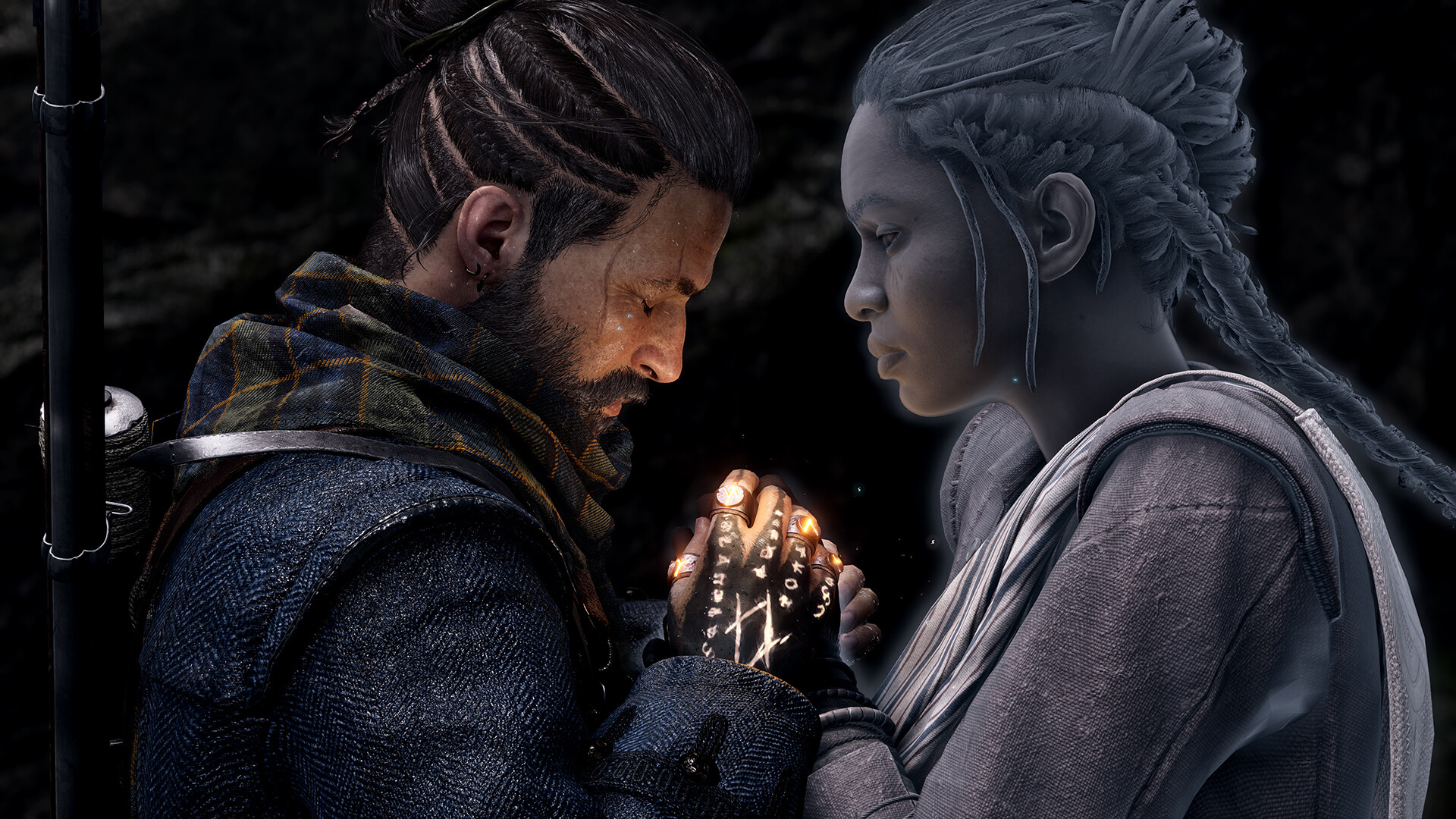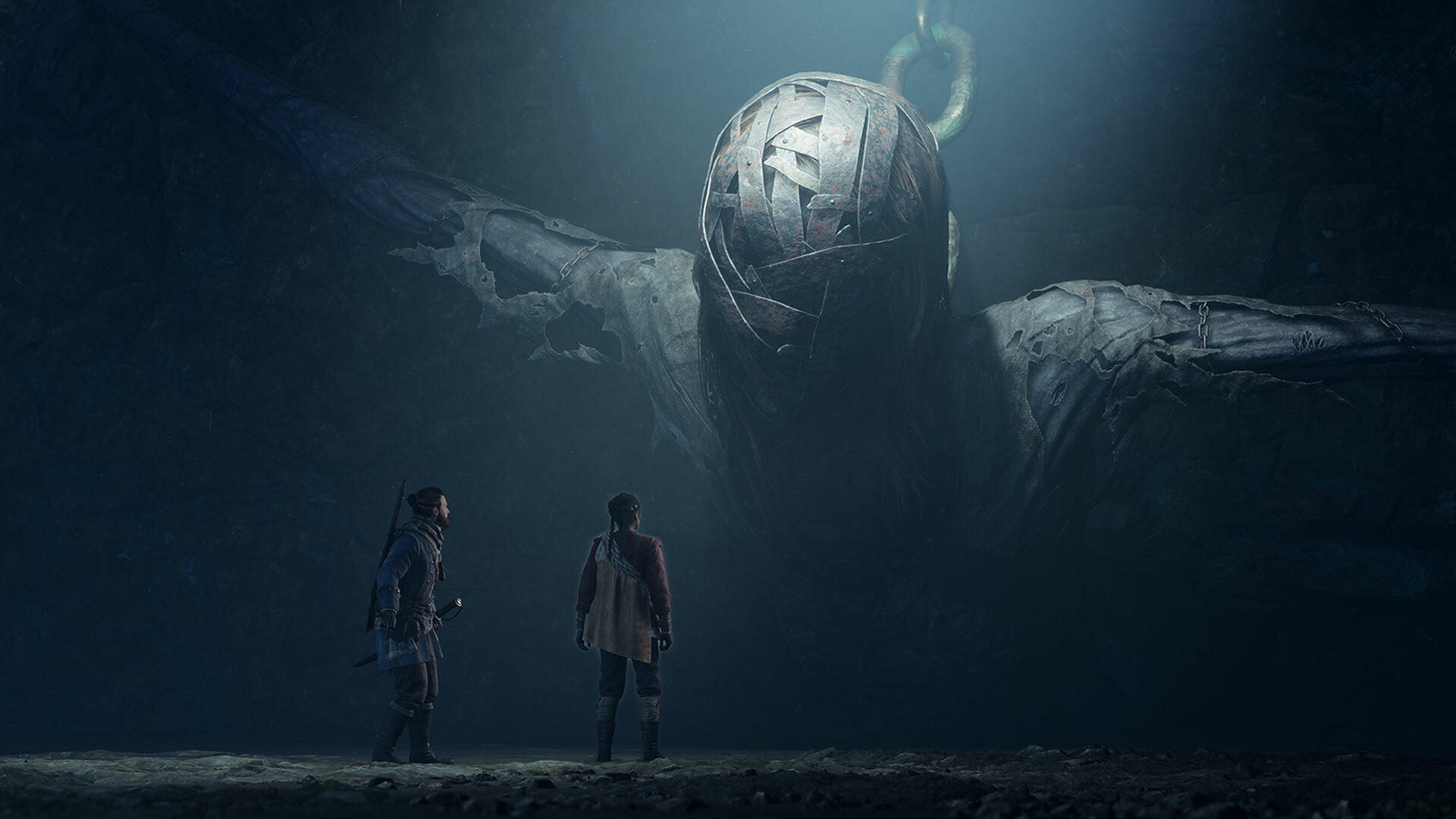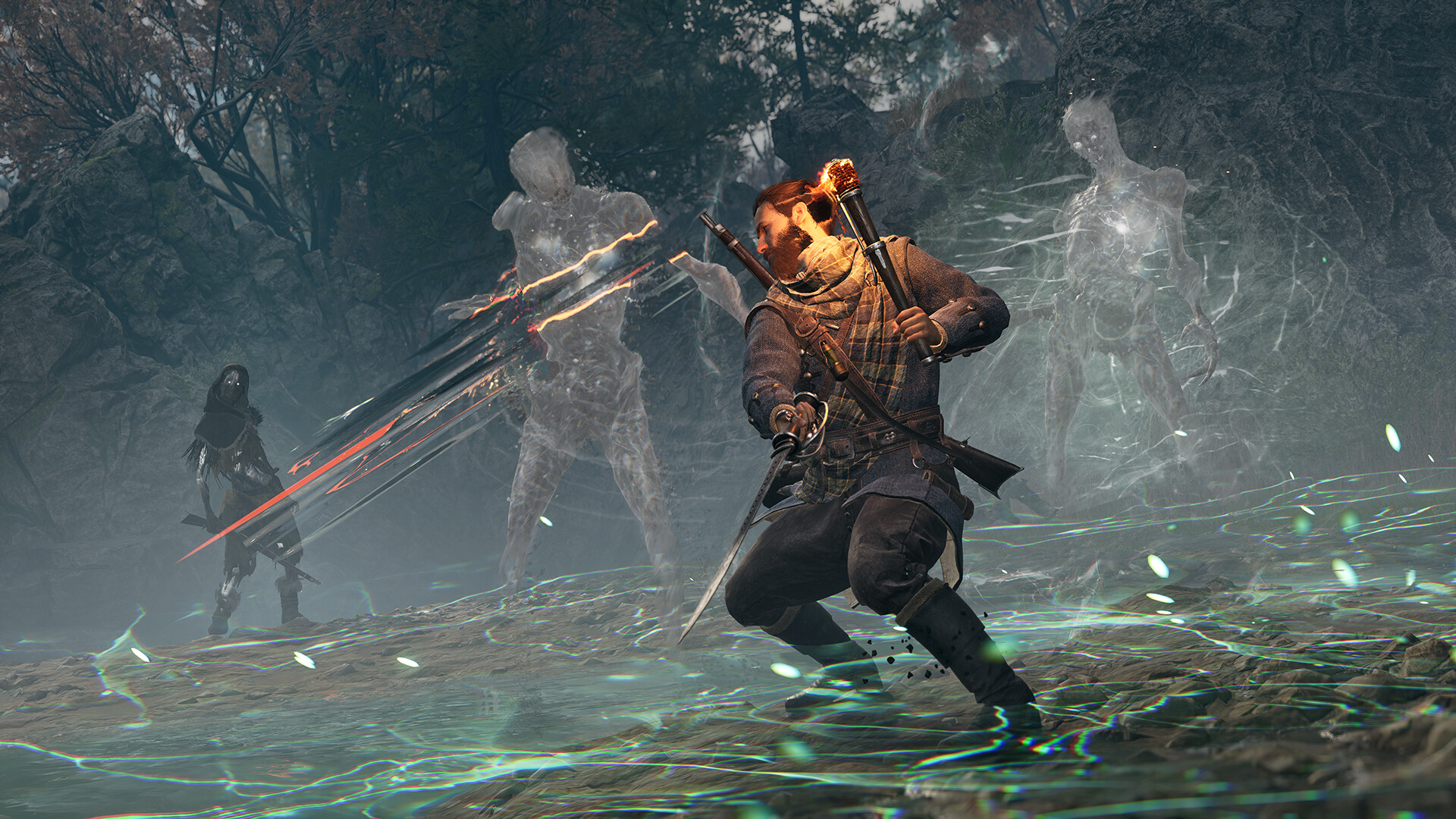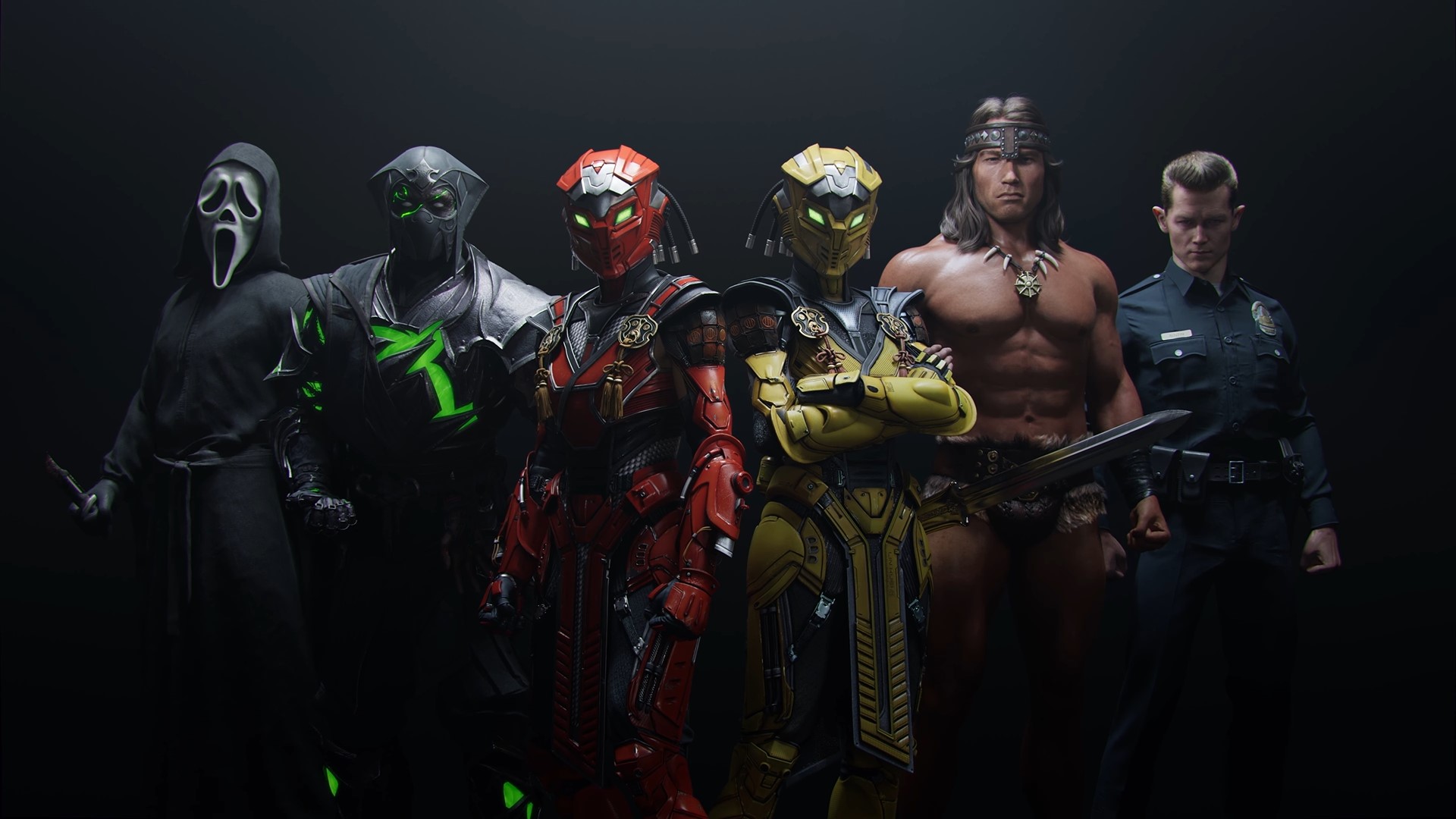
Narrative-driven adventure games might be Don’t Nod’s bread and butter, but recent years have also seen the developer branching off into different genres with new and experimental projects. One such game was 2018’s Vampyr, an action RPG that, in typical Don’t Nod fashion, put choice-and-consequence mechanics front and center, and though it was more than just a little rough and certainly felt like a studio’s first crack at a genre it had been previously completely unfamiliar with, it also showed plenty of promise.
Now, the studio is back with another new action RPG in the form of Banishers: Ghosts of New Eden, another game that, like Vampyr, places an emphasis on narrative and player choice- but with much better results. Banishers doesn’t break new ground in anything that it does, and in a lot of ways, it can feel a little too straightforward and mechanically pared back, but it also delivers a consistently solid and stable experience that sands out many of Vampyr’s rough edges – both technical and with the gameplay – while also succeeding in telling an engaging story in a well-realized world that boasts some genuinely captivating choice-and-consequence moments.
“Banishers doesn’t break new ground in anything that it does, and in a lot of ways, it can feel a little too straightforward and mechanically pared back, but it also delivers a consistently solid and stable experience that sands out many of Vampyr’s rough edges – both technical and with the gameplay – while also succeeding in telling an engaging story in a well-realized world that boasts some genuinely captivating choice-and-consequence moments.”
Set in and around the North American town of New Eden in the late seventeenth century, Banishers: Ghosts of New Eden tells the story of Antea and Red, who’re husband and wife and work together as ghost-hunters known as Banishers. After arriving in the town at the behest of an old friend to rid the community of a nightmarish curse, the duo quickly come across an enemy far more formidable than they had anticipated. In the fight that follows, Antea dies, though she comes back as a spirit, leaving her and Red with the mother of all dilemmas- now that she has become the thing the two of them are sworn to fight, how do they move forward?
Nearly everything about Banishers’ core narrative premise works exactly as it should. Antea and Red in particular are a highlight of the experience. Thanks to solid writing and performances, both are instantly endearing and well-developed, not only as individuals, but also as a couple. That, in particular, is something that games very rarely get right, but in Banishers, it’s always a joy watching Red and Antea interact with each other, watching their relationship grow and change, and watching them have each other’s backs in the face of a cavalcade of what seem like insurmountable problems.
Just as strong as the leading pair is the game’s setting. Combining a period setting with fantastical and occult elements, Banishers: Ghosts of New Eden carves out a very strong sense of place that lends it a unique identity. A desire to learn more about the world and the ghosts that haunt it always remains one of the game’s biggest driving forces, and through several arcs and narrative threads, Banishers does a great job of allowing players to examine its world through multiple different lenses and really immerse themselves in it.

“Nearly everything about Banishers’ core narrative premise works exactly as it should. Antea and Red in particular are a highlight of the experience.”
In typical Don’t Nod fashion, the game also makes excellent use of choice-and-consequence mechanics. Don’t get me wrong- The Witcher 3 this is not. Banishers is very much a smaller-budget game, so you definitely shouldn’t go in expecting something with the scale and breadth of a AAA experience, but within the framework that it establishes, it does a great job of utilizing its setting, narrative premise, and characters in making players make some legitimately captivating decisions.
The majority of that comes from the internal struggle that Antea and Red face throughout the story. As Banishers, they know better than anyone that the very existence of ghosts and spirits comes at the cost of actual life- so is their goal going to be to help Antea ascend to the next plane of existence, as they are duty-bound to do as Banishers, or do they instead want to go rogue, fight for their love and its survival, and try and bring Antea back, even if it means having to kill more than just a handful of people? At the same time, on a more zoomed in level, as you move from quest to quest and arc to arc, the game also presents you with smaller, more isolated stories where investigating hauntings and curses can lead to some surprising revelations, where once again, you’re asked to make decisions based on what you’ve found. More often than not, the choices that you’re being asked to make in Banishers feel weighty and impactful, thanks first and foremost to how well the game contextualizes them from a narrative perspective.
Branching stories and player choice have, of course, always been hallmarks of Don’t Nod games, but how does Banishers fare in other gameplay-related areas, especially as an action RPG? Well, this is where the game stumbles, even if, by and large, it’s a much more polished and better-realized version of what it’s trying to be than Vampyr was. Take the combat, for instance, which is certainly functional with its mechanics, but still feels like the weakest part of the game. Gaining new skills and abilities, especially in the game’s first few hours, does make things more interesting than how they start out, especially as the game starts putting more emphasis on swapping between Red and Antea during fights to deal with different threats, but even so, for the most part, combat in Banishers feels quite simple and straightforward- which isn’t necessarily a bad thing, but with the lack of any genuine challenge or meaningfully engaging encounter design, things do tend to fall flat quite often.

“Small detours and contained side-areas comprise the bulk of exploration, for the most part, and the rewards that you get – most upgrade materials to side quests – do their job of keeping things consistently engaging on at least a very basic level. The game also often lets you return to previously inaccessible areas with newfound powers, which also adds another dimension to optional exploration.”
It doesn’t help that general movement and controls during combat can feel a bit stiff and clunky, which is something that remains an issue throughout the entirety of the game. Meanwhile, progression, too, feels rather limited throughout the course of the experience. Leveling up nets you with skill points that you can use to upgrade Antea and Red’s skills, while the resources that you gather are used to upgrade your weapons and equipment. It’s all pretty standard fare, and its execution never does much to elevate it beyond being a serviceable yet utterly generic and forgettable part of the game.
Exploration fares much better. Like the combat (and most other gameplay-related aspects of the game), exploration in Banishers is rather straightforward, but it strikes the right balance between being focused and being rewarding. Structured as a semi-open world experience, the game sees you traveling across a variety of different locations, from ghost-infested wildlands to more settled and civilized towns and villages, and though you do often have the freedom to explore and go off the beaten path, very rarely does the game present you with expansive areas, winding branching paths, or super-hidden content. Small detours and contained side-areas comprise the bulk of exploration, for the most part, and the rewards that you get – most upgrade materials to side quests – do their job of keeping things consistently engaging on at least a very basic level. The game also often lets you return to previously inaccessible areas with newfound powers, which also adds another dimension to optional exploration.
From a technical perspective, Banishers is definitely Don’t Nod’s most impressive game to date. Again, you probably shouldn’t be going in with expectations of a hyper-polished AAA blockbuster – you’ll occasionally run into audio and visual bugs of different kinds, lip syncing issues, and what have you – but on the whole, the game runs quite well and looks really good. A lot of that is also down to the solid art design, which helps brings game’s world to life in impressive fashion.

“Gaining new skills and abilities, especially in the game’s first few hours, does make things more interesting than how they start out, especially as the game starts putting more emphasis on swapping between Red and Antea during fights to deal with different threats, but even so, for the most part, combat in Banishers feels quite simple and straightforward.”
As I said at the beginning of this review, Banishers: Ghosts of New Eden might not break any new ground, but though it walks in the well-trodden footsteps of a multitude of older choice-and-consequence driven action RPGs, it does so while nailing most of the fundamentals. In particular, its story, storytelling, setting, player choice mechanics, and central protagonists serve as highlights of the game, so even when other aspects – like the progression or the combat – do feel like they’re a bit of a letdown, overall, Banishers remains an engaging experience.
This game was reviewed on the PlayStation 5.








